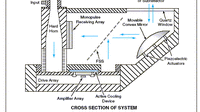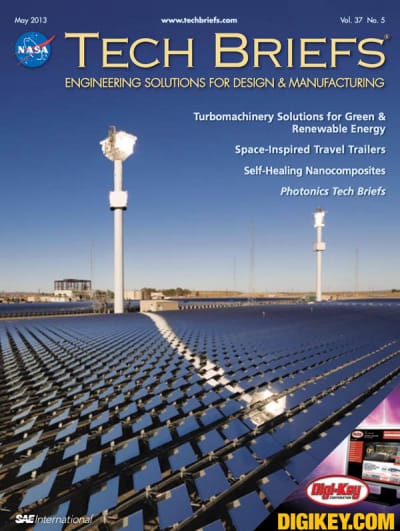The goal of this technology is to provide improved calibration and measurement sensitivity to the Soil Moisture Active Passive Mission (SMAP) radiometer. While RF switches have been used in the past to calibrate microwave radiometers, the switch used on SMAP employs several techniques uniquely tailored to the instrument requirements and passive remotesensing in general to improve radiometer performance. Measurement error and sensitivity are improved by employing techniques to reduce thermal gradients within the device, reduce insertion loss during antenna observations, increase insertion loss temporal stability, and increase rejection of radar and RFI (radio-frequency interference) signals during calibration.
The two legs of the single-pole double-throw reference switch employ three PIN diodes per leg in a parallel-shunt configuration to minimize insertion loss and increase stability while exceeding rejection requirements at 1,413 MHz. The highspeed packaged diodes are selected to minimize junction capacitance and resistance while ensuring the parallel devices have very similar I-V curves. Switch rejection is improved by adding high-impedance quarter- wave tapers before and after the diodes, along with replacing the ground via of one diode per leg with an open circuit stub. Errors due to thermal gradients in the switch are reduced by embedding the 50- ohm reference load within the switch, along with using a 0.25-in. (≈0.6-cm) aluminum pre-backed substrate.
Previous spaceflight microwave radiometers did not embed the reference load and thermocouple directly within the calibration switch. In doing so, the SMAP switch reduces error caused by thermal gradients between the load and switch. Thermal issues are further reduced by moving the custom, high-speed regulated driver circuit to a physically separate PWB (printed wiring board). Regarding RF performance, previous spaceflight reference switches have not employed high-impedance tapers to improve rejection. The use of open-circuit stubs instead of a via to provide an improved RF short is unique to this design. The stubs are easily tunable to provide high rejection at specific frequencies while maintaining very low insertion loss in-band.
This work was done by Joseph Knuble of Goddard Space Flight Center. GSC-16398-1






















